The Shriner Fez Hat is more than a red hat with a tassel. It has centuries of history, tradition, and meaning behind it. Today it is still one of the most identifiable symbols of the Shriners, a brotherhood recognized for charity and brotherhood.
Learning about this hat explains the strong foundations of Shriner culture and how the fez remains prominent in contemporary times. It is not merely an adornment but a badge of belonging, heritage, and service.
Origin of the Fez Hat
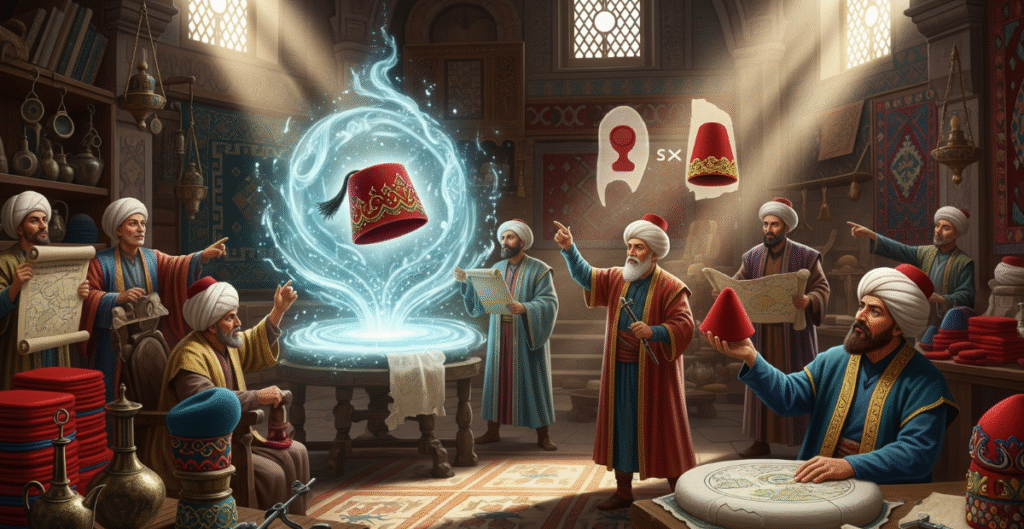
The fez began in Morocco during the early 19th century. Named after the city of Fez, this simple red hat became a cultural symbol across North Africa and the Ottoman Empire. It was a sign of respect, learning, and status. Men wore it as part of daily dress, and its style quickly spread across the Middle East.
In the Ottoman Empire, the fez became a unifying national headgear. By the mid-1800s, armies, government officials, and citizens all adopted it. Over time, the fez turned into a global icon representing Middle Eastern identity, and its reputation eventually reached Western fraternal groups.
Adoption by Shriners
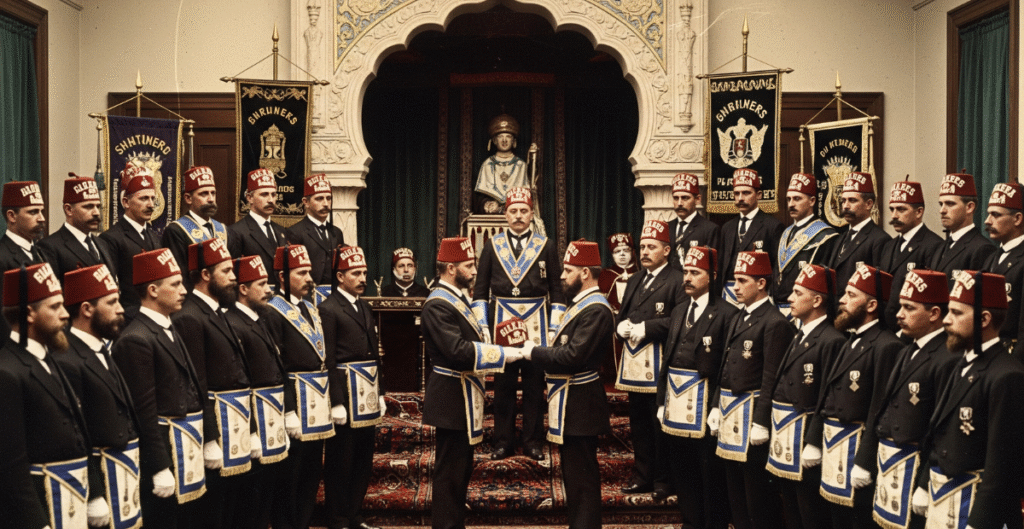
The Shriners were founded in 1870 in New York City. They wanted a fraternity that was fun, unique, and tied to themes of the Middle East. The founders, Dr. Walter Fleming and William J. Florence, were inspired by Arabian culture after attending performances abroad.
The Shriner Fez Hat was chosen because it reflected that theme. The red hat stood out in parades, rituals, and meetings. From the very beginning, the fez became the official headwear of every Shriner, making it one of the most important visual symbols of the fraternity.
See more : Masonic Knights Templar Regalia: History, Meaning, and Modern Use
Design and Features
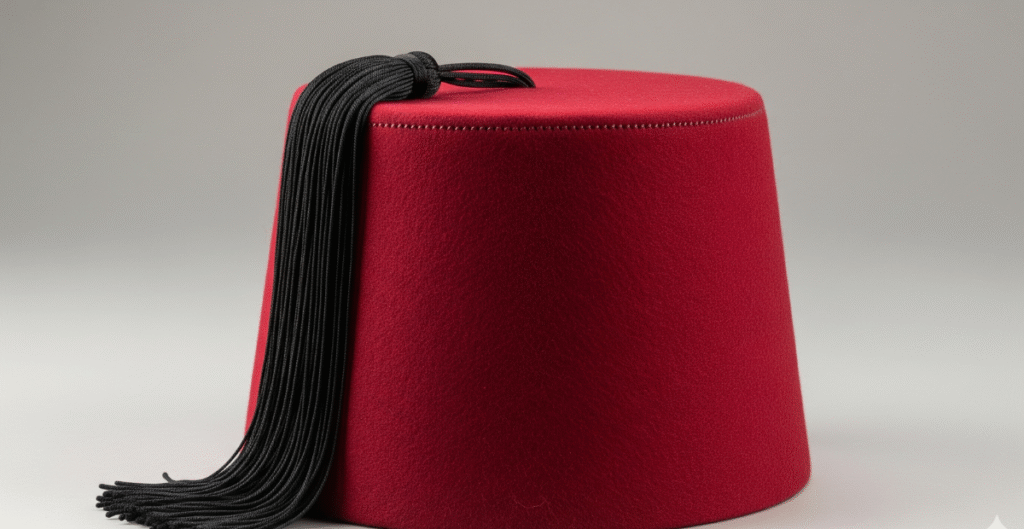
The Shriner Fez Hat is made of red felt. It is shaped like a truncated cone and decorated with a black tassel. Unlike plain fezzes from history, the Shriner version carries rich embroidery.
Most hats show a crescent moon, a star, and a scimitar across the front. Many also include the word “Shriners” or the name of a local temple. High-ranking members often add jewels, gold thread, or unique designs to make their fez stand out.
Common Features of the Shriner Fez Hat
| Feature | Meaning/Use | Variation Found |
| Red felt material | Traditional fez design | Standard |
| Black tassel | Symbol of dignity and tradition | Length varies |
| Crescent emblem | Connection to fraternity’s theme | Always present |
| Scimitar & star | Symbols of strength and guidance | Always present |
| Embroidery/jewels | Rank and special recognition | Optional |
Symbolism of the Fez
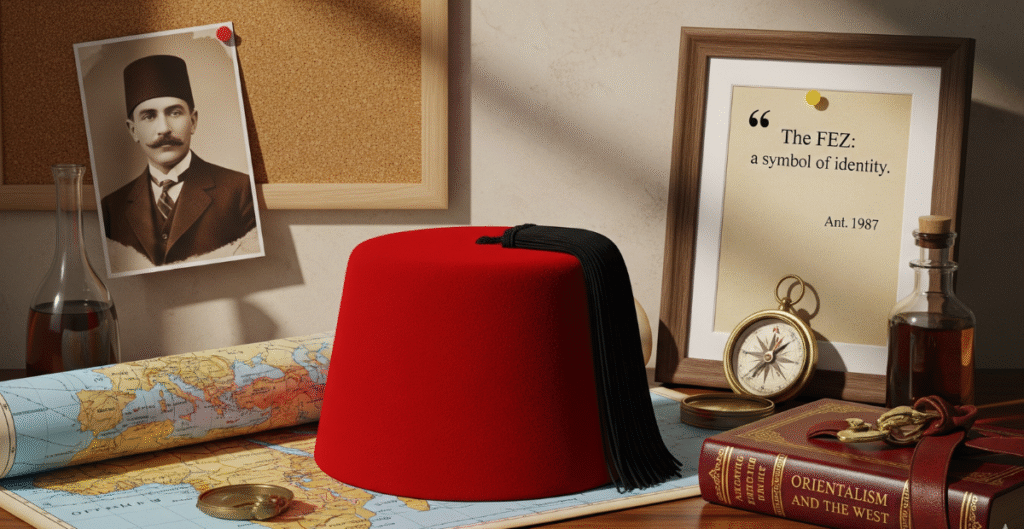
The Shriner Fez Hat is more than clothing. It represents fraternity, service, and tradition. Wearing the fez shows loyalty to the brotherhood and commitment to helping others.
The crescent and scimitar on the hat symbolize strength and protection. The star represents guidance. Together they reflect the values of Shriners—charity, honor, and fellowship. Each fez tells the world that the wearer is not just part of a club but part of a legacy.
Types of Shriner Fez Hats
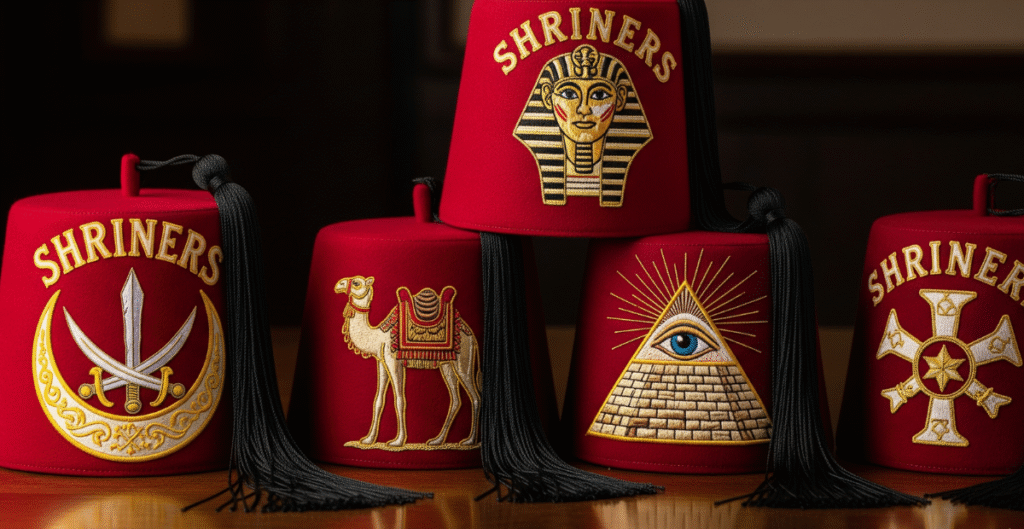
Not all fezzes are the same. Standard members wear simple red fezzes with the usual emblems. Officers and nobles often wear versions with more detail. Some hats sparkle with jewels or gold thread to show rank.
Shriner units also have custom fezzes. Bands, motor corps, clowns, and other groups create unique designs to reflect their role in parades and events. Each type of fez shows both unity and individuality.
Types of Shriner Fez Hats
| Type | Description | Who Wears It |
| Standard fez | Simple red felt, symbols only | Regular members |
| Officer fez | Embroidered, often jeweled | Temple officers |
| Unit fez | Custom designs for bands, clowns, corps | Special units |
| Noble/high rank fez | Jewel-encrusted, gold thread embroidery | High-ranking nobles |
Ceremonial and Public Use
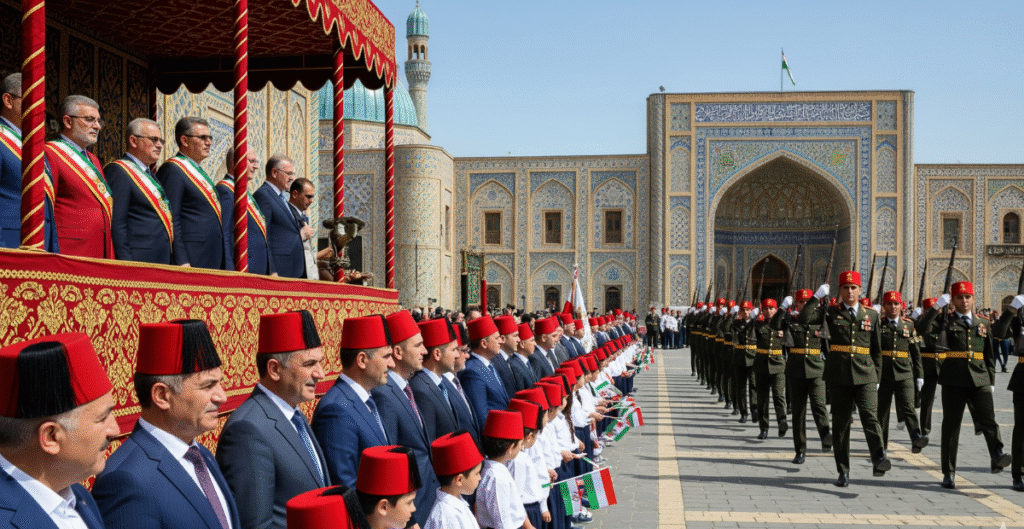
The Shriner Fez Hat plays a central role in rituals and initiations. It is worn at temple meetings, initiation ceremonies, and official gatherings. During these events, the fez is treated with respect as a sacred emblem of membership.
The fez is also seen in public celebrations. Shriners wear them in parades, circuses, and charity fundraisers. The bright red hat attracts attention and reminds people of the Shriners’ mission of helping children through hospitals and programs.
Collecting and Preservation
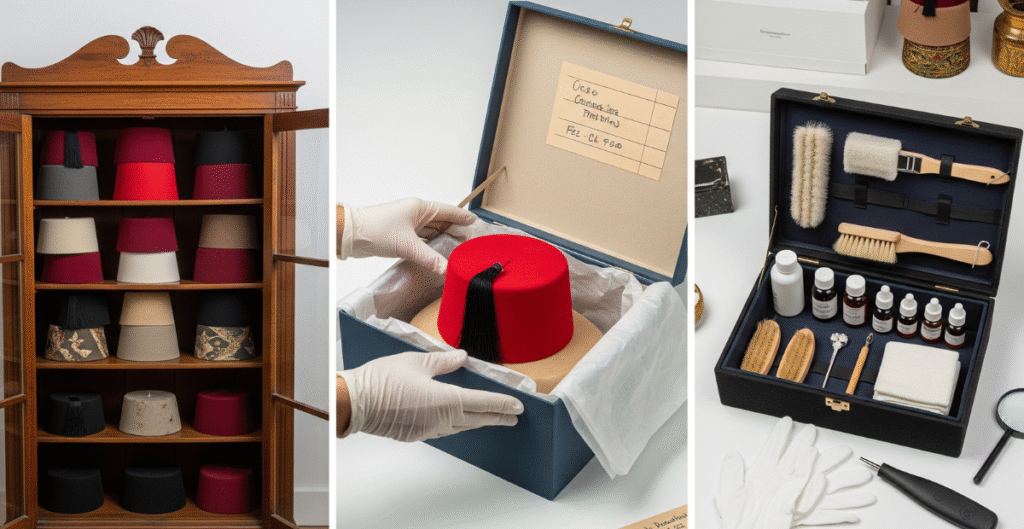
Vintage Shriner Fez Hats are highly collectible. Older hats with unique embroidery or rare jewels can be valuable. Collectors often search for fezzes linked to famous Shriners or historic temples.
To preserve these hats, proper care is needed. Fezzes should be stored away from sunlight, kept in dust covers, and handled gently to protect the felt and stitching. Collectors sometimes frame the fezzes to display them without damage.
Shriner Fez in Popular Culture

The fez has appeared in films, television, and cartoons. Shriners wearing their hats often appear in parades or comic skits, which has made the fez a familiar image worldwide. In some shows, the fez is used to signal mystery or exotic themes.
However, pop culture has sometimes created stereotypes. Cartoons often show Shriners as quirky men in tiny cars. While lighthearted, these images sometimes overshadow the serious charitable work done by the fraternity.
Shriner Fez in Modern Times

Today the Shriner Fez Hat is still proudly worn. At parades, hospitals, and charity drives, the fez reminds people of the Shriners’ dedication. Even with changes in style, the fez remains unchanged in shape and color.
Modern manufacturing has made fezzes more durable and customizable. Some members now order personalized embroidery. Yet the traditional look of the red felt and tassel stays the same, linking today’s Shriners to the founders of the fraternity.
Challenges Facing the Shriner Fez Hat
| Issue | Details | Impact on Use |
| Cultural appropriation | Debate over Middle Eastern origins | Public perception |
| Declining membership | Fewer young recruits joining Shriners | Fewer fezzes in events |
| Modern attitudes | Some see fraternal wear as outdated | Tradition questioned |
Controversies and Criticism

The fez has faced criticism. Some argue it reflects cultural appropriation because of its Middle Eastern roots. Others view it as outdated. These debates have grown in recent decades as fraternal organizations face declining membership.
Shriners respond by emphasizing their charitable mission. For them, the fez is not about copying culture but honoring tradition. While opinions differ, the fez still carries strong meaning within the brotherhood.
Brotherhood and Identity

The Shriner Fez Hat is not just a symbol of rank or ceremony. It connects every member to a worldwide brotherhood. When a Shriner puts on his fez, he is immediately recognized by fellow members, no matter where he travels. This bond creates a strong sense of belonging and unity that crosses borders and generations.
For many, the fez represents a second family. It is a reminder of shared values, mutual respect, and a commitment to serve. The bright red hat becomes a badge of identity that ties one man to thousands of others who share the same mission of charity and fraternity.
You may like : Knights Templar Regalia: History, Symbolism, and Legacy
The Fez in Charity and Service

The Shriners are best known for their hospitals and children’s programs. The Shriner Fez Hat is often worn when members raise money or volunteer in these causes. Seeing the fez at an event is a signal that help and support are nearby. It has become a trusted symbol in communities across the United States and beyond.
Wearing the fez during charity events makes it easy for the public to recognize Shriners. From parades to hospital visits, the fez reminds people that the fraternity is dedicated to more than ritual. It shows their true purpose—helping children and families in need through care, funding, and medical services.
Global Recognition

The Shriner Fez Hat is one of the most recognizable fraternal symbols in the world. Its unique shape and bright red color make it stand out immediately in crowds. Even people who know little about Shriners often recognize the fez from parades, films, or cultural references.
This global recognition has given the Shriners an advantage in outreach and community work. The fez sparks curiosity and draws attention, making it easier to spread awareness of their mission. Whether in North America, Europe, or other regions, the fez continues to mark Shriners as a distinct and respected fraternity.
FAQ”s
Why do Shriners wear fez?
Shriners wear the fez to symbolize their fraternity, tradition, and commitment to charity.
What does the crescent and scimitar on the fez mean?
They represent strength, guidance, and connection to Shriner values.
Are all Shriner fezzes the same?
No, there are standard, officer, unit, and jeweled fezzes that differ by rank and role.
Can non-Shriners wear a Shriner fez?
No, the fez is reserved for members as a badge of fraternity.
Is the fez still used today?
Yes, Shriners still wear the fez at parades, charity events, and ceremonies worldwide.
Conclusion
The Shriner Fez Hat is far more than a red cap. It is a powerful sign of identity, tradition, and service. From Morocco to New York, from Ottoman soldiers to Shriners in parades, the fez has traveled a long journey.
Even with debates and changes, the fez remains strong in Shriner life. It stands for charity, brotherhood, and pride. For as long as Shriners march and serve, the fez will remain one of their most enduring symbols.




